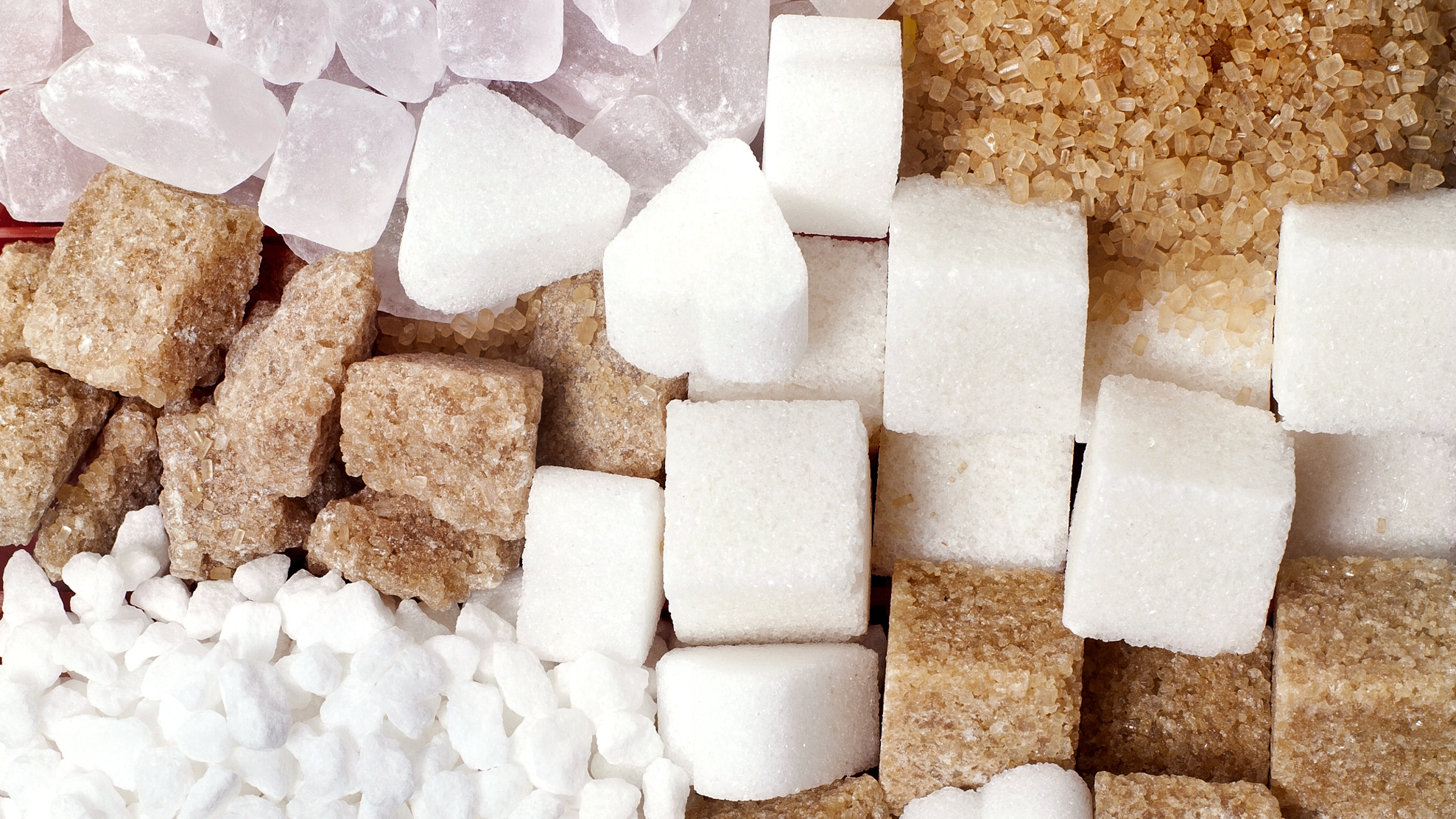-
Featured News
Added sugars: Don’t get sabotaged by sweeteners
Do you know how much sugar is in your diet? If you're like many people, you're probably eating and drinking more sugar than you realize because it's added to so many foods and beverages. Added sugars add calories without adding nutrients.
Some evidence suggests there's a relationship between added sugars and obesity, diabetes and heart disease, but this relationship isn't entirely clear.
A few facts about sugar
All sugar, whether natural or processed, is a type of simple carbohydrate your body uses for energy. Fruits, vegetables and dairy foods naturally contain sugar.
"Added sugars" are the sugars and syrups added to foods during processing. Desserts, sodas, and energy and sports drinks are the top sources of added sugars for most Americans, but many other foods contain added sugars.
Why is sugar added to so many foods?
Sweetness has an almost universal appeal. So adding sugar to processed foods makes them more appetizing. But sugar is also added to foods because it:
- Gives baked goods flavor, texture and color
- Helps preserve foods, such as jams and jellies
- Fuels fermentation, which enables bread to rise
- Serves as a bulking agent in baked goods and ice cream
- Balances the acidity of foods containing vinegar and tomatoes
Why are added sugars a problem?
Foods with a lot of added sugars contribute extra calories to your diet but provide little nutritional value. In addition, added sugars are often found in foods that also contain solid fats, such as butter or margarine, or shortening in baked goods.
Eating too many foods with added sugars sets the stage for potential health problems, such as:
- Poor nutrition. If you choose sugar-laden foods instead of other, more nutritious foods, you miss out on important nutrients, vitamins, and minerals. Regular soda plays an especially big role. Sweetened soft drinks add lots of extra sugar and calories and no other nutritional value.
- Weight gain. There's usually no single cause for being overweight or obese. But added sugar might contribute to the problem. Adding sugar to foods and beverages makes them more calorie dense. It's easy to consume extra calories when eating foods that are sugar sweetened.
- Increased triglycerides. Triglycerides are a type of fat in the bloodstream and fat tissue. Eating an excessive amount of added sugar can increase triglyceride levels, which may increase your risk of heart disease.
- Tooth decay. All forms of sugar promote tooth decay by allowing bacteria to multiply and grow. The more often and longer you snack on foods and beverages with either natural sugar or added sugar, the more likely you are to develop cavities, especially if you don't practice good oral hygiene.
Recommendations regarding added sugars
The 2015-2020 Dietary Guidelines for Americans recommend that added sugars make up no more than 10 percent of your daily calories. For a 2,000-calorie diet, that means no more than 200 calories a day should come from added sugars. That's about 12 teaspoons or 48 grams of sugar.
The American Heart Association advises a stricter limit for added sugars — no added sugar for children younger than age 2, no more than 100 calories from added sugar a day for children older than age 2 and most women, and no more than 150 calories from added sugar a day for most men. That's about 6 teaspoons or 24 grams of sugar for children older than age 2 and women, and 9 teaspoons or 36 grams of sugar for men.
To put these numbers into perspective, 1 teaspoon of sugar (which equals about 4 grams) has about 16 calories. A 12-ounce can of regular soda has about 160 calories — about 10 teaspoons or 40 grams of sugar.
Unfortunately, U.S. adults get an average of 13 percent or more of their total daily calories from added sugars, which exceeds the recommendations.
Recognizing added sugars
Identifying added sugars can be confusing. The Nutrition Facts label on packaged foods and drinks currently displays the total amount (in grams) of all sugars found in a serving of the product. This number includes both natural and added sugars.
However, the Food and Drug Administration is updating the Nutrition Facts label to help you more easily identify how much sugar is added to foods. You can expect to see a new line for added sugars (reported in grams and percent daily value) on all Nutrition Facts labels in the future. In the meantime, the only reliable way to identify added sugars is to look at the ingredient list.
Ingredients are listed in descending order by weight. If you see sugar listed among the first few ingredients, the product is likely to be high in added sugars.
Different names for added sugars
Sugar goes by many different names, depending on its source and how it was made. This can also make it hard to identify added sugars, even when you read ingredient lists and food labels.
Check for ingredients ending in "ose" — that's the chemical name for many types of sugar, such as fructose, glucose, maltose and dextrose. Here's a list of other common types of added sugars:
- Cane juice and cane syrup
- Corn sweeteners and high-fructose corn syrup
- Fruit juice concentrate and nectars
- Honey
- Malt or maple syrup
- Molasses
Despite what you may have heard, there's no nutritional advantage to honey, brown sugar or other types of sugar over white sugar.
How to reduce added sugars in your diet
To reduce the added sugars in your diet, try these tips:
- Drink water, other calorie-free drinks, or low-fat milk instead of sugary sodas or sports drinks. That goes for coffee drinks, too.
- When you drink fruit juice, make sure it's 100 percent fruit juice — not juice drinks that have added sugars. Better yet, eat the fruit rather than drink the juice to get the fiber as well.
- Choose breakfast cereals with less sugar. Skip sugary and frosted cereals.
- Opt for reduced-sugar varieties of syrups, jams, jellies and preserves.
- Choose fresh fruit for dessert instead of cakes, cookies, pies, ice cream and other sweets.
- Buy canned fruit packed in water or juice, not syrup. If you do purchase fruit packed in syrup, drain and rinse it with water to remove excess syrup.
- Choose nutrient-rich snacks such as vegetables, fruits, low-fat cheese, whole-grain crackers and low-fat, low-calorie yogurt instead of candy, pastries and cookies.
The final analysis
By limiting the amount of added sugars in your diet, you can cut calories without compromising nutrition. In fact, cutting back on foods with added sugars may make it easier to get the nutrients you need without exceeding your calorie goal.
Take this easy first step: Next time you're tempted to reach for a soda or other sugary drink, grab a glass of ice-cold water instead.
This article is written by Mayo Clinic Staff. Find more health and medical information on mayoclinic.org.
Related Articles








